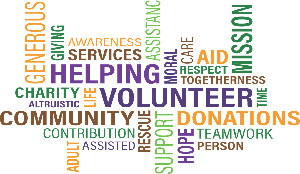Saturday, December 21, 2019 ~ NATIONAL
~ West Shore Voice News
The amount Canadians donate to charity—as a percentage of their income claimed on their taxes—has hit a 20-year low and lags far behind the amount Americans give, finds a new study by the Fraser Institute (which calls itself an independent, non-partisan Canadian public policy think-tank).
It is unclear why the Fraser Institute finds it necessary to compare Canada to the USA; cultures are different, and so are the economic rhythms.
“The holiday season is a time to reflect on giving, and with Canadians being less generous every year, charities face greater challenges to secure resources to help those in need,” said Jake Fuss, senior policy analyst with the Fraser Institute and co-author of Generosity in Canada and the United States: The 2019 Generosity Index.
The study by the conservatively-positioned organization finds that less than one-in-five Canadian tax-filers (19.9%) claimed charitable donations on their tax return in 2017, the most recent year of available data, compared to 24.9 per cent—almost one-in-four—Americans.
However, many people give generously in their communities (as seen locally in BC) in ways that are not indicated on tax returns – not just financially but in terms of volunteer time and effort. This alone shows a bias in the Fraser Institute reporting.
“Crucially, the total amount donated by Canadians—just 0.54% of income—is the lowest amount since at least 2000. Over that period, Canadians’ generosity peaked at 0.78 per cent in 2006,” the Fraser Institute said in their news release this week.
The Fraser Institute says that — by comparison — American tax-filers donated 1.52% of their income to registered charities in 2017—nearly three times the percentage Canadians claimed.
“Canadians might be surprised to learn that Americans are far more generous when it comes to claimed donations to registered charities, and that’s been the case for many years,” Fuss said.
Of course, the Great Recession that dug in at the end of 2008 will have impacted the degree to which donors who are capable of large financial donations has had an impact all the way around — not just on donations but the need for donations. Other than the “top one percent”, most people and small businesses were affected by the near-crash of the economy in 2008 which took many years to reach a stable point of recovery (some say nine to 10 years).
The fact that food bank operations continue to serve more people all the time is only one indicator that the economy is in a state of serious unbalance.



